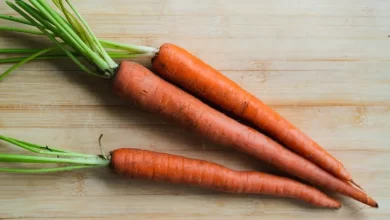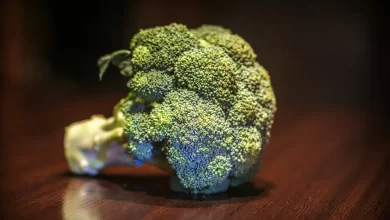Corn, also known as maize, is a popular cereal grain widely cultivated worldwide. It is a staple food in many countries and is used in a wide variety of food products, including breakfast cereals, tortillas, popcorn, and animal feed. Corn is native to the Americas and has been cultivated by indigenous peoples for thousands of years. It is an important crop in many countries, including the United States, China, Brazil, and Mexico. Corn plants can grow to be several feet tall and produce large ears of corn, which are harvested when the kernels are fully mature. The kernels can be yellow, white, or a combination of both and are a good source of dietary fibre, vitamins, and minerals. Corn is also used in the production of biofuels and industrial products, such as ethanol and plastics. However, the cultivation of corn can also have negative environmental impacts, such as soil erosion and water pollution, and there are ongoing efforts to develop more sustainable and environmentally-friendly methods of corn production. So, let’s dive into the world of corn with these interesting facts about corn.
- Corn is believed to have been domesticated in Mexico around 9,000 years ago. It was later introduced to Europe and other parts of the world by explorers and traders.
- Corn is a versatile crop that can be used for food, animal feed, fuel, and industrial products. It is also an important source of starch, oil, and protein.
- There are different varieties of corn, including sweet corn, popcorn, dent corn, flint corn, and flour corn. Each variety has its own unique characteristics and uses.
- Corn is grown in many countries around the world, with the United States, China, and Brazil being the top producers.
- Corn is a warm-season crop that requires a lot of sunlight and warm temperatures to grow. It is typically planted in the spring and harvested in the fall.
- Corn is often used to make ethanol, which is a renewable fuel that can be blended with gasoline. It is also used to make other biofuels, such as biodiesel.
- Corn is a good source of vitamins and minerals, including vitamin C, thiamine, and potassium. It is also high in fibre and low in fat.
- In addition to being used for food and fuel, corn is also used to make a wide range of industrial products, such as plastic, glue, paper, and textiles.
- Over 1.2 billion metric tons of corn were produced worldwide in the 2021/22 marketing year.
- There are over 200 varieties of corn grown worldwide.
- Corn is grown in every continent of the world except Antarctica.
- Each bushel of corn yields needs nearly 3,000 gallons of water. To produce One pound of corn requires approximately 127 gallons of water.
- The tassel at the top of the corn plant is the male flower, while the silk at the end of the ear is the female flower. The silk captures pollen from the tassel to fertilize the ear.
- Corn is a member of the grass family, and it can grow up to 10 feet tall in ideal conditions.
- Corn is one of the most genetically diverse crops, with over 50,000 known varieties.
- The average ear of corn has around 800 kernels arranged in 16 rows.
- Corn is used to making a wide range of food products, including cornmeal, cornstarch, corn syrup, corn flour, and corn oil.
- In some cultures, corn is considered a sacred plant and is used in religious ceremonies and rituals.
- Corn is used to make masa, a dough used to make tortillas and other traditional Mexican foods.
- Some people have a genetic condition called corn allergy, which causes an allergic reaction to corn and corn products.
- The colour of the corn kernel can vary, with white, yellow, and blue being the most common colours.
- Corn is a major ingredient in many popular foods, including breakfast cereals, popcorn, tortilla chips, and cornbread.
- The United States produces the most corn in the world, with over 370 million metric tons produced in 2021.
- Corn is an important crop for many small farmers around the world, providing a source of income and food security.
- In some cultures, corn is used for medicinal purposes. For example, some Native American tribes used corn silk as a remedy for bladder infections.
- In traditional Native American agriculture, corn, beans, and squash were often planted together in a technique known as the “three sisters”.
- Corn has been genetically modified to increase yield, reduce disease, and resist pests. However, the use of genetically modified corn remains controversial in some circles.
- China was the biggest importer of corn in the year 2021 and imported US$7.6 billion (13.6% of total imported corn). Mexico came in the 2nd spot with $5.1 billion (9.2%) worth of imports. Japan was the third country that imported the most corn, with $4.7 billion (8.5%) worth.
- Corn has been used in various cultural traditions and folklore around the world, including the Mayan story of the maize god and the tradition of decorating homes with corn husks in some Latin American countries.
- Corn has a relatively low glycemic index, meaning that it is digested and absorbed slowly, providing a steady source of energy.
- The corn kernel is composed of three parts:
• The endosperm is the starchy part of the kernel.
• The germ contains oil and nutrients.
• The bran is the outer layer of the kernel. - Corn silk, the hair-like strands that grow from the end of an ear of corn, has been used in traditional medicine to treat a variety of conditions, including high blood pressure and diabetes.
- Corn has been grown in space on the International Space Station as part of experiments to study plant growth in microgravity environments.
- The first Thanksgiving feast in the United States likely included corn, as it was an important crop for the Native Americans and early settlers.
- Corn is used to make a wide range of alcoholic beverages, including beer, whiskey, and tequila.
- The corn smut fungus, also known as huitlacoche in Mexican cuisine, is a delicacy that is prized for its unique flavour and texture.
Nutrition Facts of Corn
Here are the nutrition facts in one ear of sweet corn, you get these nutrients per serving:
- Calories: 90
- Protein: 3 grams
- Fat: 1 grams
- Carbohydrate: 19 grams
- Fiber: Less than 2 gram
- Sugar: 6 grams
- Vitamin C: 7 milligrams (mg)






